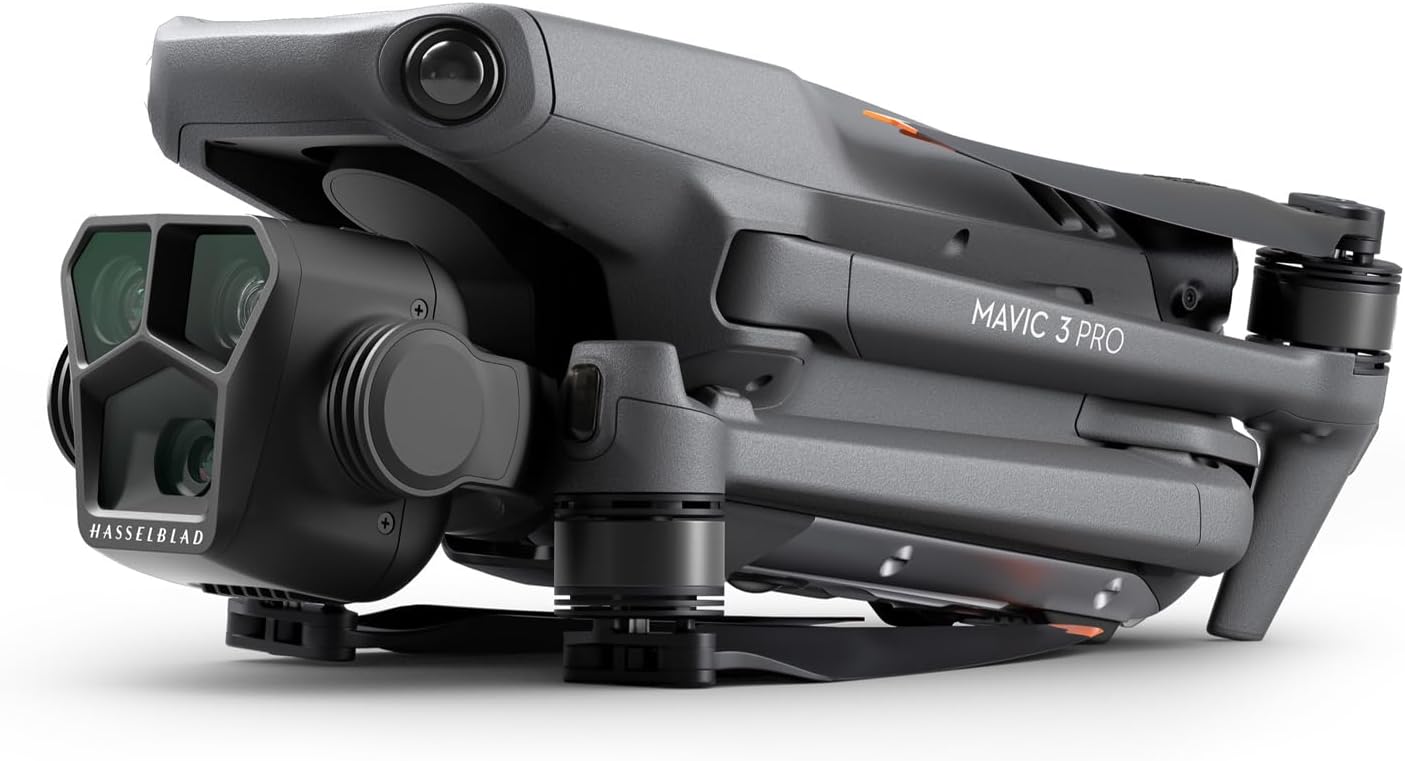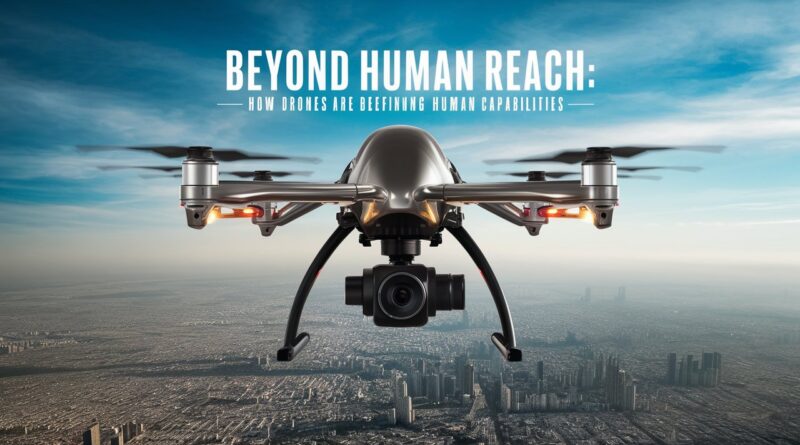Beyond Human Reach: How Drones Are Redefining Human Capabilities

Beyond Human Reach: How Drones Are Redefining Human Capabilities
Introduction
Drones, or unmanned aerial vehicles (UAVs), have revolutionized various sectors by extending human capabilities beyond traditional limits. From search and rescue operations to commercial applications, military use, medical applications, and environmental monitoring, drones are transforming how we interact with and manage our world. This post explores the multifaceted roles of drones in these areas, highlighting their impact and potential to redefine human capabilities.
1- Search and Rescue Operations
Enhancing Efficiency and Safety
Drones have become indispensable tools in search and rescue (SAR) operations, providing unprecedented efficiency and safety. Equipped with high-resolution cameras, thermal imaging, and infrared sensors, drones offer real-time visual information that significantly enhances the precision and speed of SAR missions. For instance, drones can quickly assess disaster situations, locate people in distress, and provide critical data to responders, reducing the time and number of searchers deployed[2][3].
Real-World Applications
In air-sea rescues, drones can locate survivors of emergency water landings or seagoing vessel losses. On land, they are used in mountainous rescues, collapsed buildings, and natural calamities. Drones equipped with loudspeakers can broadcast messages to missing persons, while spotlights provide additional visibility during night operations[2]. The integration of AI in drones further enhances their capabilities, allowing for human detection and predictive analytics to forecast potential survivor locations[2].
2- Commercial Drones
Transforming Industries
Commercial drones are transforming various industries by providing innovative solutions that enhance efficiency and reduce costs. In agriculture, drones are used for crop monitoring, pest control, and precision farming. They can cover large areas quickly, providing farmers with detailed data on crop health and soil conditions, which helps in making informed decisions[1].
Infrastructure and Delivery Services
In the construction industry, drones are used for site surveys, progress monitoring, and safety inspections. They provide high-resolution images and 3D models of construction sites, enabling better project management and reducing the need for manual inspections. Additionally, drones are revolutionizing delivery services by providing rapid and efficient delivery of goods, especially in remote or hard-to-reach areas[1].
3- Military Use
Advanced Surveillance and Combat
 Drones have become critical assets in military operations, providing advanced surveillance, reconnaissance, and combat capabilities. Equipped with AI, high-resolution imaging, and real-time data transmission, military drones can navigate complex environments autonomously, analyze threats, and make rapid decisions with minimal human input[4]. This reduces the risk to human personnel and enhances the effectiveness of military operations.
Drones have become critical assets in military operations, providing advanced surveillance, reconnaissance, and combat capabilities. Equipped with AI, high-resolution imaging, and real-time data transmission, military drones can navigate complex environments autonomously, analyze threats, and make rapid decisions with minimal human input[4]. This reduces the risk to human personnel and enhances the effectiveness of military operations.
Strategic Importance
The integration of sophisticated AI and edge computing in military drones allows for coordinated swarm operations, stealth missions, and 5G integration. These advancements highlight the growing strategic importance of drones in global security and defense strategies. The military drone market is expected to expand significantly, driven by increasing government funding and technological innovations[4].
4- Medical Applications
Rapid Response and Delivery
Drones are redefining healthcare delivery by providing rapid response and delivery of medical supplies. In emergency situations, drones can transport medical supplies to disaster-affected areas, deliver emergency medical care to patients in remote locations, and provide real-time monitoring of patient conditions[5]. This capability is particularly valuable in regions with geographical constraints or during natural disasters.
Overcoming Challenges
While drones offer significant potential in healthcare, there are regulatory, safety, and technological challenges to their wider adoption. Ensuring data privacy, addressing regulatory hurdles, and overcoming technical limitations are essential for the successful integration of drones in healthcare delivery. Despite these challenges, the potential of drones to transform healthcare delivery, particularly in disaster management and prehospital care, is vast and warrants further exploration[5].
5- Environmental Monitoring
Tracking Wildlife and Ecosystems
Drones are playing a crucial role in environmental monitoring by providing access to previously unreachable areas, offering real-time data, and reducing human disturbance in sensitive habitats. They are used to track migratory patterns of animals, monitor the health of forests and wetlands, and assess ecosystem health. This bird’s-eye view is transforming the way researchers and conservationists understand and interact with the natural environment[1].
Technological Advancements
The effectiveness of drones in environmental monitoring is enhanced by advanced technologies such as high-resolution cameras, sensors, and AI. These technologies enable drones to collect and analyze vast amounts of environmental data, identify patterns, track changes over time, and predict future environmental trends. The integration of drones with other technologies, such as satellite imagery, further amplifies their potential in environmental conservation[1].
6- Future Directions
Autonomous Flight and AI
The future of drone technology lies in advancements in autonomous flight and AI. Autonomous drones capable of navigating complex environments without human intervention are becoming increasingly sophisticated. This allows for more precise data collection, especially in hard-to-reach or hazardous areas. AI plays a crucial role in processing and analyzing the vast amounts of data collected by drones, enabling them to identify patterns, track changes, and predict future trends[1].
Integration with Other Technologies
The integration of drones with other cutting-edge technologies, such as satellite imagery and machine learning, promises to revolutionize various sectors. For instance, in environmental monitoring, the combination of drone data with satellite imagery can provide a comprehensive view of ecosystems, enhancing conservation efforts. In healthcare, integrating drones with telemedicine platforms can improve remote patient monitoring and emergency response[1][5].
7- Ethical and Regulatory Considerations
Addressing Privacy and Security
As drones become more prevalent, addressing ethical and regulatory considerations is essential. Ensuring data privacy, addressing security concerns, and establishing clear regulations for drone use are critical for gaining public trust and ensuring responsible use. Balancing innovation with privacy and security is crucial for the sustainable development of drone technology[2][5].
Overcoming Technical Limitations
Overcoming technical limitations, such as signal loss, battery life, and environmental challenges, is essential for the effective deployment of drones. Continuous advancements in drone technology, including improved algorithms for obstacle avoidance and environmental mapping, are necessary to address these challenges and enhance the capabilities of drones[1][2].
Conclusion
Drones are redefining human capabilities by extending our reach and enhancing our ability to interact with and manage our world. From search and rescue operations to commercial applications, military use, medical applications, and environmental monitoring, drones are transforming various sectors and providing innovative solutions to complex challenges. As technology continues to advance, the potential of drones to revolutionize our world is vast, promising a future of precision, efficiency, and innovation. By embracing these advancements and addressing the associated challenges, we can harness the full potential of drones to enhance human capabilities and create a safer, more efficient, and more sustainable world. The journey of drones from mere tools to indispensable assets in various fields is a testament to the transformative power of technology and its ability to push the boundaries of what is possible.
——————–
This post provides a comprehensive overview of how drones are redefining human capabilities across various sectors. By exploring their roles in search and rescue, commercial applications, military use, medical applications, and environmental monitoring, we can appreciate the transformative impact of drone technology and its potential to shape the future.
Citations & Credits:
The Video: Mount Everest’s First Drone Delivery






